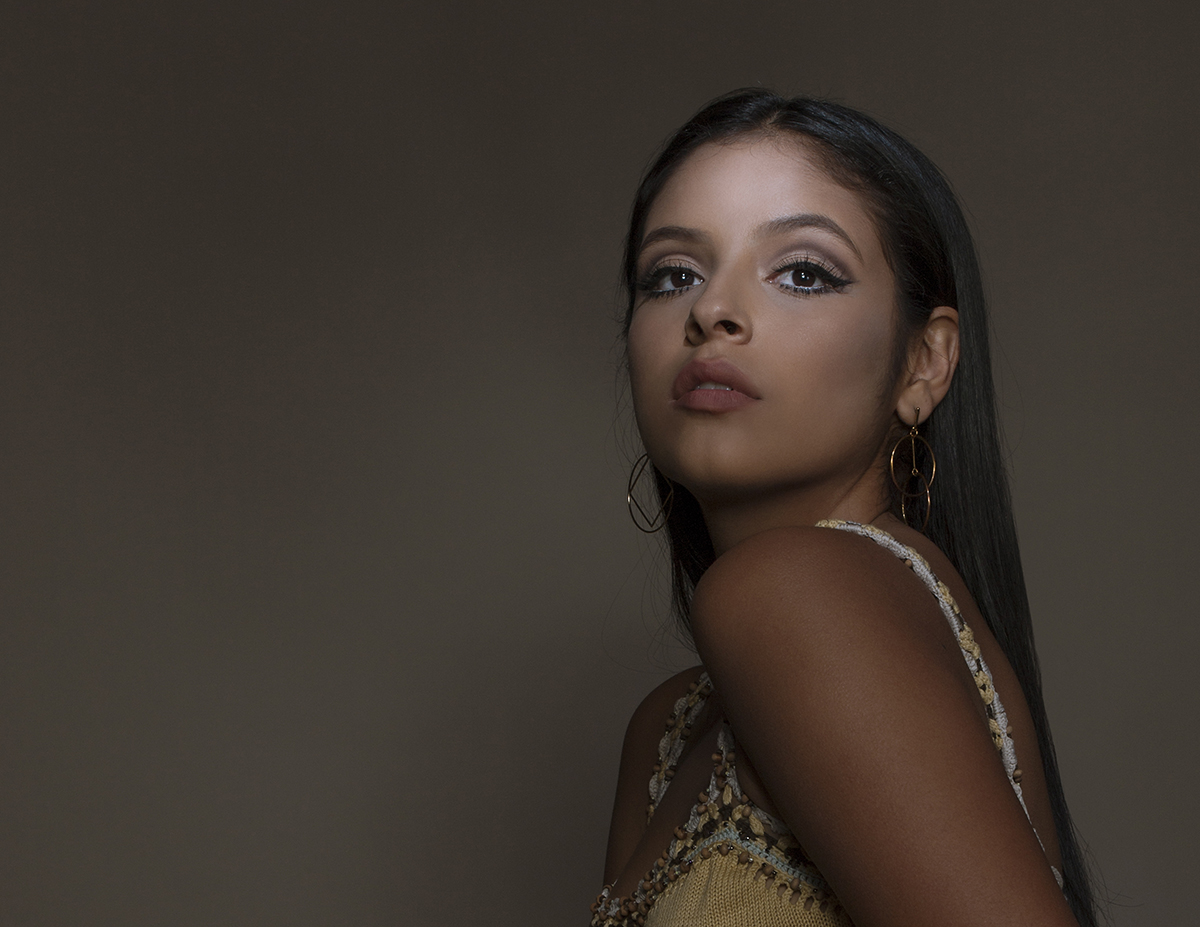How to: Take Classic Yet Contemporary Portraits
Hernan Rodriguez uses the new Tamron SP 70-200mm VC G2 lens to bring old-school style into the 21st century.
More Photo Tips | Video Gallery | Photo Gallery | Enewsletter sign-up
By Jenn Gidman
Images by Hernan Rodriguez
Photographers, like most types of artists, are constantly evolving. Hernan Rodriguez has noticed a shift in his own style over the past couple of years, and he attributes that partly to a newfound obsession with old-time photography. "I started studying classic portraits from fashion photographers from the 19th century, circa 1839-1901, and it started to impact my work," he says. "Many of my more-recent images impart a sense of stillness and stoicism, really emphasizing the face and its expressions and allowing the eyes to convey the purpose of the portrait."
Hernan's new Tamron SP 70-200mm VC G2 lens has offered him the flexibility and versatility he needs to achieve just the right perspective—he can be taking a full-length photo one second, then zoom in for a close-up the next—and he's been impressed with the 70-200's crispness and clarity. "My images come out tack-sharp, even using the slow shutter speeds I normally use," he says. "The lens picks up every detail I want emphasized."
Hernan talks here about four recent portraits and how he pulled together his lighting setups, backgrounds, and sometimes shy subjects to create these striking images.
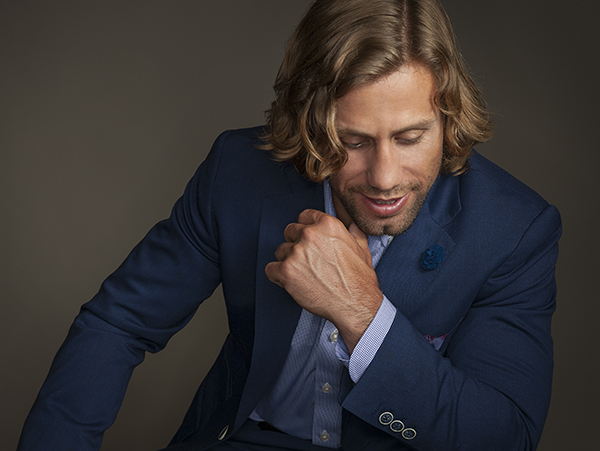
107mm, F/9, 1/160th sec., ISO 100
This photo of MMA fighter Urijah Faber was taken a couple of months after he'd retired. He was being inducted into the UFC Hall of Fame, and his team wanted some fresh, contemporary photos of him. Because I wanted so many different types of images, the 70-200 proved ideal. I could capture everything from tight shots to three-quarter pictures and full lengths.
We had seven different lighting scenarios we used in total, but because this particular image was meant to be a commercial/editorial photo, I wanted it to be more edgy and contrasty, with plenty of shadow. For my main light, I used a 29-inch beauty dish, which allowed me to direct the focus where I needed (in this case, his face and three-quarters of his suit). The light fall-off kept the focus on the face.
I even painted the background for this photo myself. We wanted a classic portrait, but many of the canvases I saw weren't what I was looking for. So I took a canvas and sponged any parts that were distracting, totally smoothing it out—all with the idea in mind that I would use compression to blur the background.
It's not easy when you're photographing athletes and sports celebrities, especially male athletes. They're used to being and doing something physical; anything within the confines of posing isn't natural to them. What I do before we start a session in such cases is examine their natural body language. For most of the shots in this particular photo session, I wanted to incorporate Urijah's hands as a symbol of strength, but not by showing just his hands. I used the hands as a focal point, but I didn't make them dominate the picture.
How this particular pose and expression came about was kind of funny. I had my printed storyboards on the table in front of him, which showed everything from the lighting to the style I was looking for. It helps, especially with athletes who might be more nervous in front of the camera, to be on board with the session and understand where we're going with it. He was looking down and studying the pose I wanted him to take when I grabbed this shot.
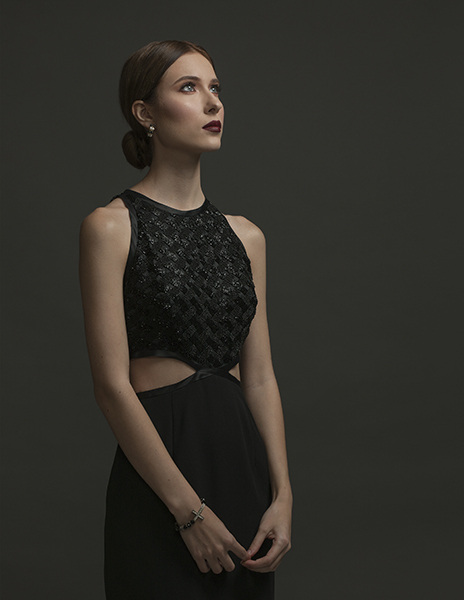
70mm, F/11, 1/100th sec., ISO 160
As a photographer, you have to be very discerning in choosing models, as casting plays an important part in how your images will be conveyed. When we were casting for this session, my team wasn't sure at first about this model. She was such a simple, natural beauty that they weren't sure she'd stand out in the final images. But that's exactly what I liked—there was nothing overpowering about her. I could see beyond that subdued beauty. I wanted her strength to lie in her gaze and her elegant stature and stance. The hair and makeup artistry also helped bring her to life.
I kept the lighting here very simple and controlled. Umbrellas can offer multiple types of light: If you put black reflective fabric behind one, for example, it will bounce back more intense light at your subject; take the reflective fabric off and it bounces back softer. If you collapse it, it's more direct. I used a white satin umbrella because of its soft quality and collapsed it so I could direct more of the focus on her face.
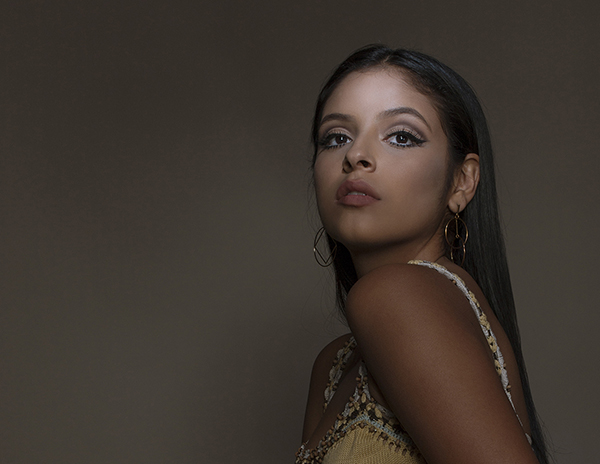
70mm, F/13, 1/100th sec., ISO 125
For this image, I wanted it to look like something out of old Hollywood. The most impactful part of the photo for me was the lighting. If you strip everything down, it's a straightforward scene: She's got her hair pulled back, her clothing is simple, the background is a seamless gray paper. She's a beautiful girl, but there's nothing dynamic about the set or what she's wearing. The lighting is what makes the shot.
I once again started with a Dynalite 29-inch beauty dish, which I sometimes use a diffuser sock on. I'll also sometimes use a grid, which focuses the light more, and sometimes I'll go for a combination of both. This model had great skin, so I figured I could get away with using hard, directional light on her. I took the sock off to make the light more contrasty and placed the grid to focus the light, using gobos to further control everything.
Once I was able to see the light, I liked the quality of it, but I wanted to minimize it even more. You have to cut away or add, depending on your narrative. I placed a black board on the top of the grid, then on the bottom portion, so just a shaft of light was hitting her. I also wanted a little more separation on the background to separate her dark hair, so I put a small strobe light on the grid and powered up to give me that kick of light. Finally, I brought in a second white-satin umbrella to open up my shadows. I like how you can see how the light delineates, the transition from full light to where it falls off. I was also able to get that nice catchlight in her eyes.
The 70-200 was awesome in this regard—it offered so much clarity and sharpness. Of course, it helped that I was using high-definition lighting, but the images that were coming out of the camera were almost like medium format. Plus, with that 70-200 focal-length range, I was able to go with whatever was happening in the moment. So if I was doing a full-length or three-quarters photo but suddenly caught a wonderful expression and wanted a tighter shot, I could zoom in so the viewer could feel her gaze, as if she were right there in front of you. The 70-200 is a terrific instrument that allows me to convey those types of things to the viewer.
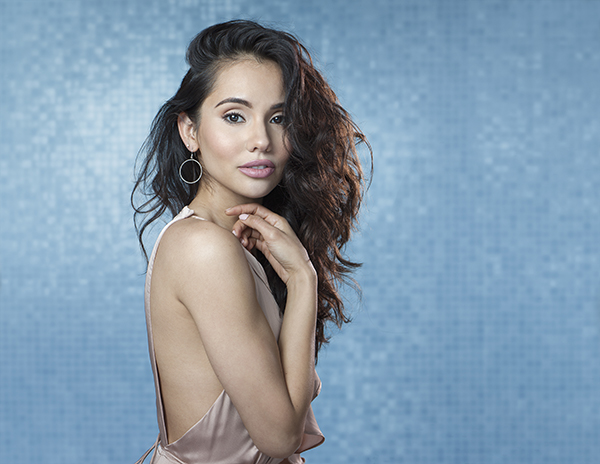
83mm, F/10, 1/160th sec., ISO 100
Marycarmen Lopez is an up-and-coming celebrity I recently had the pleasure of photographing. She's been featured in Maxim magazine's "Top 10," came in second in Univision's Nuestra Belleza Latina beauty pageant, and was featured in the Oprah-produced series Queen Sugar. Her agent wanted a series of several images of her, all with different looks.
For this particular image, we wanted something like a young, natural, old-school Raquel Welch or Sophia Loren look, with a contemporary feel added in. Her agent and publishers worked with me on the storyboards I sent them until we arrived at a final concept. The storyboards are always my starting point. The more I can do on paper, the less I have to do on set. It really helps everyone focus, because we know exactly where to go, what the style of lighting is going to be, and so on.
My background was textured plywood, set way back behind her. Looking at my subject always helps me determine where I go with the direction of light and the quality of modifier I use. I could've used a black, gray, or white satin modifier, but Marycarmen has flawless skin, so I used as my main light a 7-foot Octobox with a Westcott Zeppelin 47-inch silver-metallic parabolic modifier, which adds a specular sheen and gives me the contrasty, punchy, fashion-style look I wanted. There was no scrim, no diffusion—just a raw box on her.
This image also wasn't planned, at least not in the way it turned out. We went in with a preconceived notion of doing a three-quarters shot, but her agent saw how everything looked and said, "Oh my gosh, can we get a full length?" That's where we, as photographers, have to be ready to roll with the punches and modify. That's also where the 70-200 lightens the load for me. There's no running back and forth: I can simply stay in the same position, open up the scene by pulling back, and voila—a happy agent!
To see more of Hernan Rodriguez's work, go to www.hernanphotography.com.
More Photo Tips | Watch Videos | Learn More About Tamron Lenses | Photo Gallery
